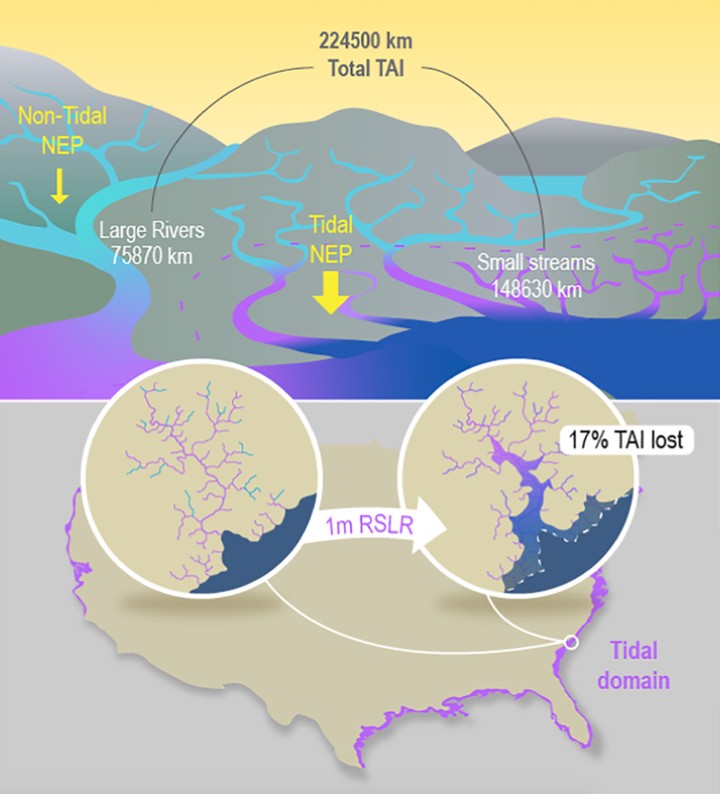Small streams dominate US tidal reaches and will be disproportionately impacted by sea-level rise

Abstract
Rivers and streams represent <0.6% of the Earth’s land surface but play a disproportionately large role in global biogeochemical cycles and provide locally relevant ecosystem services. However, knowledge of how rivers influ- ence material budgets and ecosystem services has major gaps due to the lack of explicit consideration of tidally- influenced reaches. Focusing on the conterminous US, we provide a foundation for understanding the role of tidal streams. We find that 66% of tidal stream length is contributed from low order streams (< 4th order), and that terrestrial ecosystem production in low-lying coastal zones is 30% greater than in adjacent terrestrial ecosystems. This prevalence of small streams indicates that small coastal watersheds dominate tidally influenced spatial do- mains. Furthermore, we find that relative sea-level rise (RSLR) will have a disproportionate impact on low order tidal streams and their terrestrial interfaces - 1 m RSLR will decrease the tidal stream land-water interface by 17% and the total surface area of US tidal streams by 31%. Upstream reaches of tidal zones will be extended in response to RSLR, but gains will be more than offset by coastal losses because topographic gradients become steeper mov- ing inland, and accretion rates may not keep pace with RSLR. These results highlight previously unrecognized dominance, high productivity, and disproportionate future loss of low-order coastal ecosystems. This indicates a critical need to focus research on small tidal stream systems under contemporary and future conditions.